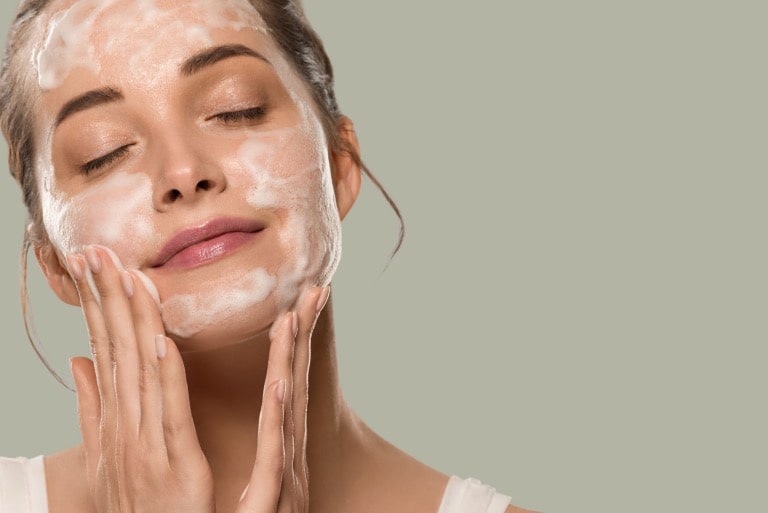In the ever-growing skincare industry, manufacturers continuously strive to deliver high-quality products that are safe and effective for the market’s use. And one of the most critical aspects of producing exceptional skincare products is sourcing safe and clean ingredients.
What Are Clean Ingredients?
Clean ingredients are not harmful to human health, do not accumulate in the body, are non-toxic to the environment, and are cruelty-free. They are generally safe and do not contain toxic substances like acrylamide, paraben, phthalates, or sulfates.
However, sourcing clean skin ingredients and quality products involves a multi-step process. In this blog, we will discuss the best practices that skincare manufacturers can adopt to ensure they look for the right chemical supply partner, source the best ingredients, and guarantee quality production processes.
These best practices include the following:
1. Thoroughly Research Ingredient Suppliers
Manufacturers searching for safe and clean ingredients should conduct extensive research on potential suppliers, assessing their history, reputation, qualifications, credentials, certifications, manufacturing practices, and understanding of final market applications. In short, anything that demonstrates their competence in these areas.
This step can help ensure that the supplier you’re eyeing is credible and follows the necessary guidelines.
2. Prioritize Traceability
Tracing an ingredient back to its source can help ensure its safety and quality. These chemicals that go into skincare must be traceable in case allergies, contact dermatitis, or other reactions are encountered.
With this in mind, it’s best practice to look into suppliers that provide transparent information about their ingredients’ origins, cultivation, processing, and supply chain, including warehousing, distribution, and delivery.
3. Conduct Regular Quality Control Testing
Regular testing of raw ingredients and finished products is crucial in ensuring safety and efficacy. Skincare product manufacturers can work with independent laboratories to test for impurities, contamination, and adherence to safety guidelines.
Moreover, inquire about the supplier’s quality control and assurance processes, such as batch testing, documentation, and Good Manufacturing Practices (GMP) adherence.
4. Review Product Offerings
As you look for a supplier to source your ingredients from, examine the company’s product range and ensure they offer a variety of clean skincare ingredients that align with your needs. But be mindful of potentially harmful ingredients, such as parabens, sulfates, synthetic fragrances, and phthalates.
Ask for samples of their products to test their performance, quality, and safety. You can conduct in-house tests or collaborate with a third-party lab to analyze and verify the ingredients’ effectiveness, purity, and stability.
5. Review Sustainability And Ethical Practices

Choosing suppliers prioritizing sustainability and ethical sourcing practices is essential in producing clean, safe skincare products. As a good start, look for suppliers that support regenerative agriculture, fair labor practices, and environmentally friendly packaging. You can also look for certifications like Fair Trade to ensure they align with your brand’s values and commitment to clean skincare.
6. Establish Strong Supplier Relationships
Besides having a smooth working dynamic, maintaining a solid relationship with suppliers is essential in ensuring ingredient quality. Open communication and collaboration can help manufacturers understand their suppliers’ practices and ensure they maintain the desired standards.
On the other hand, to ensure your chosen supplier can meet your production needs and scale up as your business grows, discuss their production capacity, lead times, and ability to maintain consistent quality and supply. You can also visit the supplier’s facility to look at their operations, manufacturing processes, and quality control measures. This can help you better understand their capabilities and commitment to producing clean skincare ingredients.
7. Stay Updated on Industry Regulations and Standards
Staying informed about the latest industry regulations and standards (e.g., FDA) can help manufacturers ensure their products remain compliant. As a good start, attending industry events, joining professional organizations, and subscribing to industry newsletters to stay updated on the latest trends and regulatory changes would be best.
8. Assess Pricing And Terms
Compare pricing, payment terms, and contract conditions among the suppliers you’ve shortlisted. From there, you can choose a supplier that offers competitive pricing without compromising quality and reliability.
9. Evaluate The Supplier’s Customer Support
A reliable partner can determine the success of your skincare business. But besides supplying you with clean and quality ingredients, it’s best to assess the supplier’s responsiveness and customer support. A good supplier should provide timely assistance, address your concerns, and offer technical support when needed.
Wrapping Up
The skincare industry is constantly evolving, and manufacturers have to be informed and updated, and open to improvements to keep up with the market. And of the recent changes is the shift to a more sustainable way to source clean ingredients.
By following these ten practices, manufacturers can ensure their products are of the highest quality and safety standards, benefiting their brand reputation and the consumers who trust their products.
